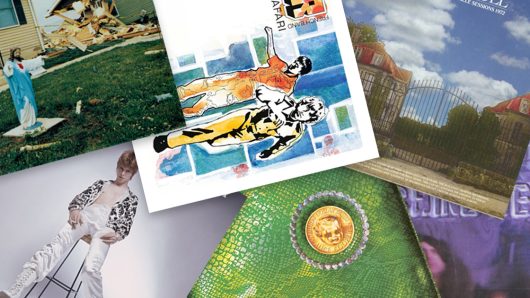As Blur approached the end of the decade they’d helped define, their music, as well as the four bandmates themselves, was beginning to fracture. Personal crises had begun to take their toll on the group, not least frontman Damon Albarn, whose relationship with Elastica’s Justine Frischmann had “absolutely crashed”, as he put it in the documentary No Distance Left To Run, adding, “It really was a spectacularly sort of sad end.” Out of the turmoil, however, came some of the most personal songs of Albarn’s career to date, not least Tender, a heart-rending ballad that would spearhead the campaign for Blur’s sixth album, 13, and establish itself as one of the best love songs of the era.
“I can’t quite believe what an important song that is now,” Albarn would reflect years later. But even as Tender was coming together, Blur knew they had something special on their hands.
Listen to the best of Blur here.
The writing: “Very painful. Agonisingly slow. Getting caught up in your own misery”
Albarn had begun writing Tender in a one-bedroom flat on Golborne Road, in West London, where he’d taken up residence following his breakup with Frischmann. “If the truth be known, a lot of 13 stems from that period,” he told music critic Stuart Maconie, for the Blur biography 3862 Days: The Official History. “I’d rented this flat for a year and I wrote a lot of lyrics there. Tender dates from then. Very painful. Agonisingly slow. Getting caught up in your own misery.”
Across London, guitarist Graham Coxon was also facing up to his own demons and taking his first steps towards sobriety. Sitting at home one morning, he came up with a song fragment which, when woven into the words and music Albarn had written, would see the finished ballad reflect both artists’ vulnerability.
- ‘13’: A Track-By-Track Guide To Every Song On Blur’s Classic Album
- Best Breakup Songs: 30 Classic Salves For Broken-Hearted Lovers
- ‘13’: The Story Behind Blur’s End-Of-A-Century Masterpiece
“I dream of songs, or they slip into the world while I am dreaming,” Coxon wrote in his memoir, Verse, Chorus, Monster!. He would go on to reveal that his first experience of waking up with a “little golden chord sequence and a silvery melody or lyric to go with it” was when the “Oh, my baby” refrain that would become Tender’s post-chorus spun itself into existence.
“That phrase found me one morning, bleary-eyed and before my first cup of tea, and embarked on a magical journey,” Coxon recalled. Though he would later admit he “didn’t have much of a clue that things were going wrong with Damon and Justine”, the guitarist recorded his idea on a Sony dictaphone and took it to Albarn. With perfect serendipity, two key elements of Tender slotted into place.
The recording: “It was the best thing we’d ever done”
Much of 13 was recorded in Unit 13, a drab warehouse in West London where, in a new creative process for Blur, the band jammed for hours on song ideas, opening up all manner of unexplored paths. Producer William Orbit, fresh from his work on Madonna’s up-to-the-minute electronica album, Ray Of Light, manned the controls, saving up every sound, no matter how incidental-seeming, in order to stitch these sometimes disparate parts into complex pieces of music that would force a complete rethink over what Blur were thought to be at the end of the decade they’d helped to define.
Although these experimental sessions could be tough, the band found the results satisfying, with drummer Dave Rowntree noting that, up until then, the recording process hadn’t interested him, but that, with all ideas welcome during the 13 sessions, “I had more of an influence on things rather than adding drums to a finished track… This was like a great outpouring of ideas.” Indeed, an unlikely percussion part, created by slamming planks of wood on the studio floor, brought some heft to the song following a few rounds of the scratchy guitar motif Coxon had re-tracked through Orbit’s Panasonic dictaphone (“We haven’t quite decided which has the better wobble,” Coxton told Stuart Maconie), and which now served as Tender’s delicate intro.




